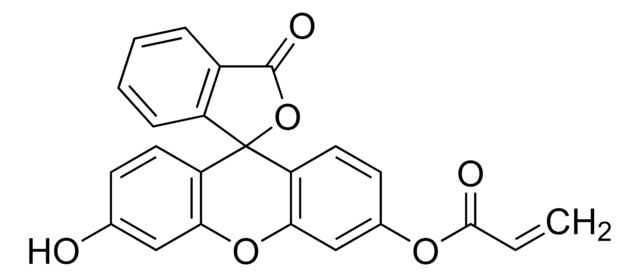740950
Solketal methacrylate
50 wt. % in dichloromethane, contains ~280 ppm 4-tert-butylcatechol as inhibitor
Synonym(s):
(2,2-Dimethyl-1,3-dioxolan-4-yl)methyl methacrylate, GMAK, Glycerine-1-methacrylate acetone ketal, SMA
About This Item
Recommended Products
form
liquid
contains
~280 ppm 4-tert-butylcatechol as inhibitor
concentration
50 wt. % in dichloromethane
refractive index
n20/D 1.438
density
1.153 g/mL at 25 °C
storage temp.
−20°C
SMILES string
CC(=C)C(=O)OCC1COC(C)(C)O1
InChI
1S/C10H16O4/c1-7(2)9(11)12-5-8-6-13-10(3,4)14-8/h8H,1,5-6H2,2-4H3
InChI key
JPFPDGRVRGETED-UHFFFAOYSA-N
Signal Word
Danger
Hazard Statements
Precautionary Statements
Hazard Classifications
Carc. 2 - Eye Dam. 1 - Flam. Liq. 3 - Skin Irrit. 2 - STOT SE 3
Target Organs
Central nervous system, Respiratory system
Storage Class Code
3 - Flammable liquids
WGK
WGK 2
Flash Point(F)
81.0 °F
Flash Point(C)
27.2 °C
Certificates of Analysis (COA)
Search for Certificates of Analysis (COA) by entering the products Lot/Batch Number. Lot and Batch Numbers can be found on a product’s label following the words ‘Lot’ or ‘Batch’.
Already Own This Product?
Find documentation for the products that you have recently purchased in the Document Library.
Customers Also Viewed
Our team of scientists has experience in all areas of research including Life Science, Material Science, Chemical Synthesis, Chromatography, Analytical and many others.
Contact Technical Service




















